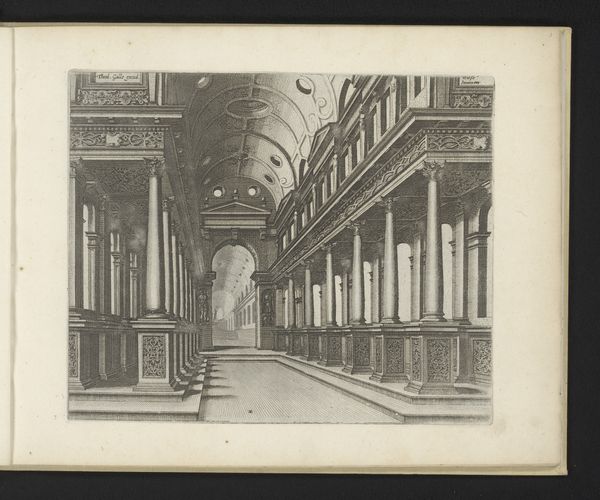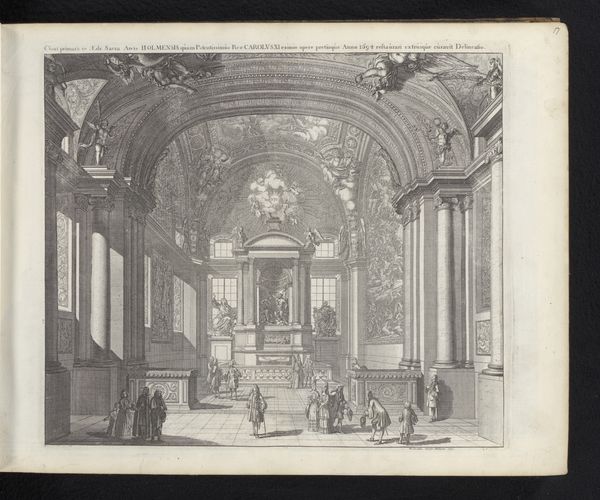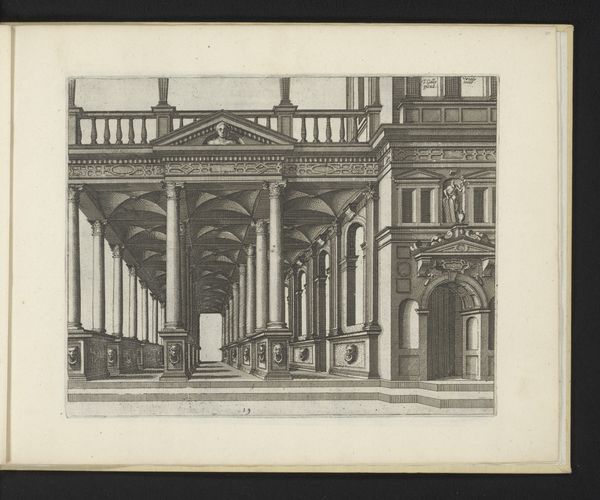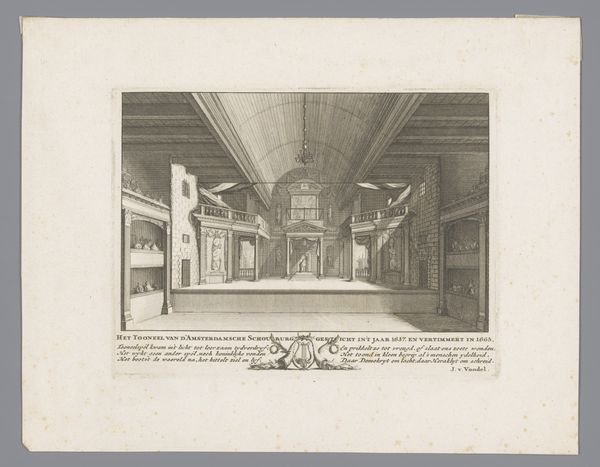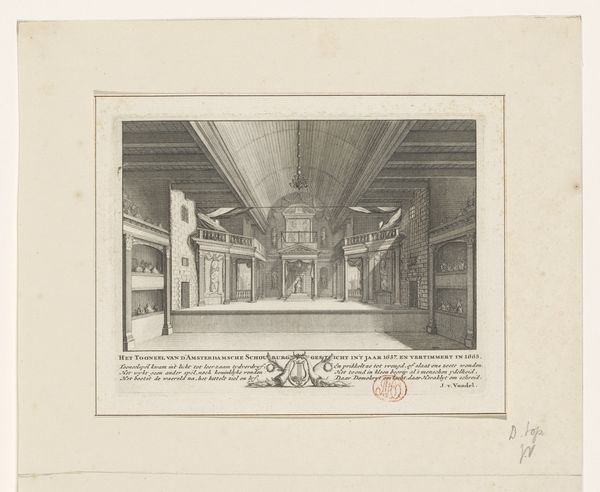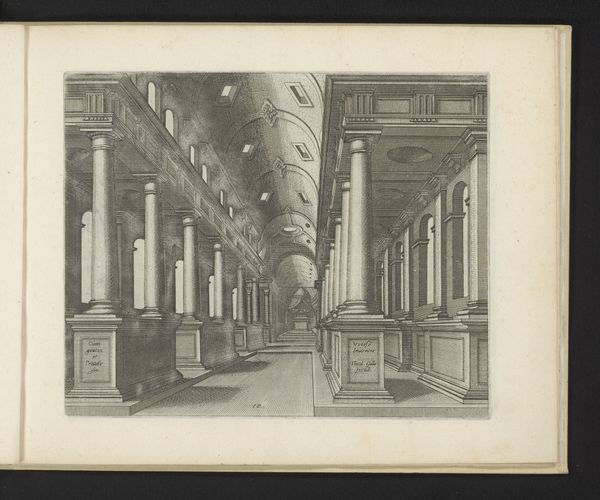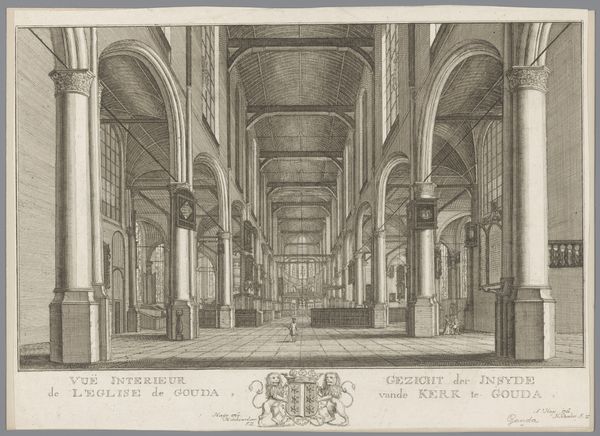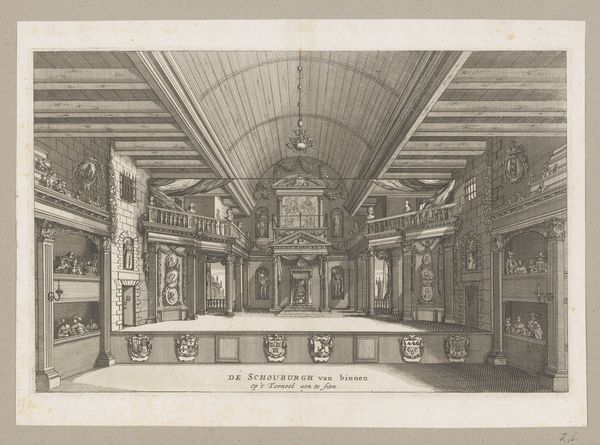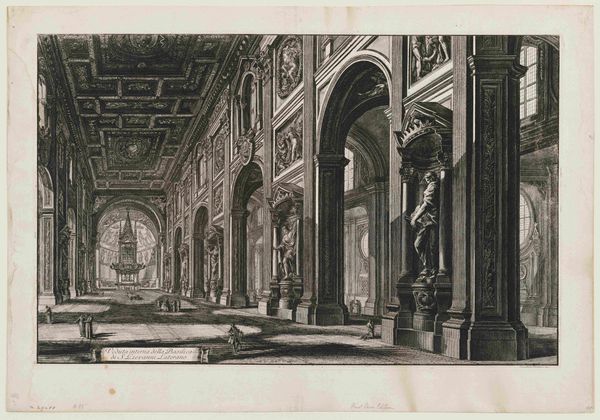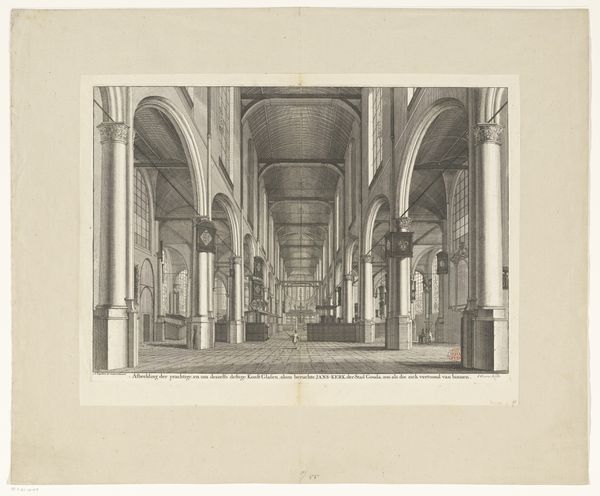
drawing, intaglio, paper, engraving, architecture
#
drawing
#
intaglio
#
perspective
#
paper
#
form
#
line
#
genre-painting
#
northern-renaissance
#
engraving
#
architecture
#
realism
Dimensions: height 212 mm, width 258 mm
Copyright: Rijks Museum: Open Domain
Editor: This is "Interieur met een gedecoreerde schouw links," or "Interior with a Decorated Mantelpiece on the Left," an engraving by Johannes or Lucas van Doetechum from 1601. It's striking how they created such a sense of depth with just lines. How do you interpret this work? Curator: It’s fascinating to consider this interior as more than just a room, but as a stage for cultural memory. Notice how the architecture is embellished with classical motifs, these statues, the precisely patterned ceiling… These elements evoke the grandeur of antiquity. It suggests a deliberate attempt to align with the intellectual and artistic values of ancient Greece and Rome. Editor: So the classical details aren’t just decoration, but a kind of statement? Curator: Precisely. And consider where it might have been placed. Architectural prints like this functioned as both documentation and aspirational templates for wealthy patrons. They could see their own spaces reflected, but also see how they could embody those classical ideals. What does that architectural symmetry communicate to you? Editor: It's about harmony and order. Perhaps it communicates the owner's sense of themselves and their position in society, a show of prestige? I hadn’t thought about it as symbolic. Curator: Absolutely! Images of architectural spaces transcend their practical function and communicate the patron’s desire for a well-ordered and cultivated self, aligning with enduring ideals of beauty and knowledge. Editor: That's a helpful way of looking at this! It connects the tangible world to less concrete ideas of self-representation. Curator: Indeed, an artist presents us with more than just the visible, don’t they? They offer us layers of symbolic meaning about culture and identity to consider.
Comments
No comments
Be the first to comment and join the conversation on the ultimate creative platform.

